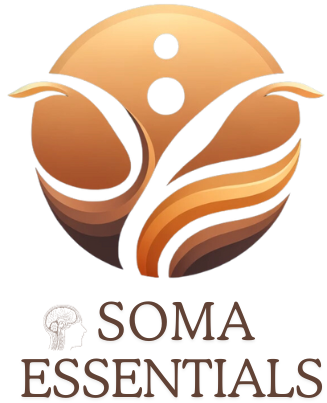Meditation and Body Scan Techniques for Cultivating a Mind-Body Connection
Meditation and body scan techniques are powerful tools for cultivating a mind-body connection. In today’s fast-paced world, it’s easy to get caught up in the busyness of life and neglect our inner selves. However, taking the time to quiet our minds and tune into our bodies can have profound effects on our physical, mental, and emotional well-being. Whether you’re a beginner or an experienced practitioner, incorporating meditation and body scan techniques into your daily routine can help you find balance, peace, and a deeper understanding of yourself. In this article, we will explore the benefits of these practices and how they can enhance your mind-body connection. So, let’s take a deep breath and dive into the world of meditation and body scan techniques.
Meditation is a powerful practice that has been used for centuries to cultivate a mind-body connection. It involves bringing awareness to the present moment and focusing on the sensations of the body, breath, and thoughts. There are different types of meditation techniques that can be used to achieve this connection, including mindfulness meditation, body scan meditation, and walking meditation.
Mindfulness meditation is a form of meditation that involves paying attention to the present moment with non-judgmental awareness. It helps individuals to become more aware of their thoughts, emotions, and sensations in the body. By practicing mindfulness, individuals can develop a deeper understanding of their mind-body connection and learn to regulate their emotions and reactions.
Body scan meditation is a type of mindfulness meditation that involves systematically scanning the body from head to toe. It helps individuals to become more aware of their physical sensations and any areas of tension or discomfort in the body. By focusing on the body, individuals can release tension and improve their mind-body connection.
Walking meditation is another form of mindfulness meditation that involves paying attention to the sensations of walking. It can be done indoors or outdoors and helps individuals to become more grounded and present in their bodies. By focusing on the movement of the body, individuals can improve their mind-body connection and reduce stress and anxiety.
Somatic therapy exercises are another way to cultivate a mind-body connection. These exercises focus on releasing tension and increasing body awareness through movement. Some examples of somatic therapy exercises include gentle stretches, yoga, and tai chi. These exercises can easily be practiced at home and can help individuals release tension, increase body awareness, and promote self-healing.
The principles of somatic movement and healing are based on the idea that the mind and body are connected and influence each other. By becoming more aware of our bodies and how we move, we can improve our overall well-being. For example, by practicing somatic principles such as grounding, individuals can become more present in their bodies and release tension and stress.
In everyday life, the principles of somatic movement and healing can be applied in simple ways. For example, taking a few minutes to focus on the breath and bring awareness to the body can help individuals become more grounded and connected to their bodies. Practicing mindful movements, such as stretching or yoga, can also help individuals become more aware of their body and promote relaxation and self-healing.
Mindfulness Meditation
Mindfulness meditation is a type of meditation that focuses on being present in the moment and cultivating a non-judgmental awareness of one’s thoughts, feelings, and sensations. It involves intentionally paying attention to the present moment without getting caught up in thoughts or distractions.
This practice can greatly improve mind-body connection by promoting self-awareness and enhancing the ability to tune into physical sensations and emotions. By becoming more mindful, individuals can better understand their body’s signals and respond to them in a way that supports overall well-being.
Research has shown that regular mindfulness meditation can have numerous benefits, such as reducing stress, improving sleep, and increasing feelings of relaxation and calm. It can also help individuals become more in tune with their body and its needs, leading to a stronger mind-body connection.
Body Scan Meditation
Body scan meditation is a powerful technique for cultivating a mind-body connection. It involves bringing attention to different parts of the body, noticing any sensations or tension, and allowing yourself to fully relax and release any tension. This practice can help increase body awareness, reduce stress and anxiety, and improve overall well-being.
The steps involved in body scan meditation are simple:
- Find a comfortable position, either sitting or lying down.
- Close your eyes and take a few deep breaths to relax your mind and body.
- Bring your attention to your feet and notice any sensations, such as tingling or warmth.
- Slowly move your attention up through each part of your body, noticing any sensations or tension and allowing yourself to relax.
- Continue this process until you reach the top of your head.
- Take a few deep breaths and slowly open your eyes.
The benefits of body scan meditation are numerous. It can help reduce stress and anxiety, improve sleep quality, increase self-awareness, and promote overall relaxation and well-being. This practice can also be used as a tool for self-discovery and exploring the mind-body connection.
Walking Meditation
Walking meditation is a form of mindfulness practice that involves walking slowly and deliberately, paying attention to each step and the sensations in the body. It is a powerful tool for cultivating a mind-body connection as it allows us to bring our attention to our physical movements and sensations, while also calming and focusing the mind.
The process of walking meditation is simple. Find a quiet and peaceful place to walk, preferably in nature. Begin by standing still and taking a few deep breaths, feeling the ground beneath your feet and the weight of your body. As you start walking, pay attention to each step, feeling the heel, ball, and toes of your foot as it makes contact with the ground. Notice the movement of your muscles and joints as you take each step.
As you continue walking, focus on your breath, allowing it to guide the pace of your steps. If your mind starts to wander, gently bring it back to the present moment by focusing on your steps and breath. You can also choose to repeat a mantra or affirmation with each step, such as “I am calm” or “I am present.” This can help deepen your connection to your body and bring more intention to your movements.
The effects of walking meditation on the mind-body connection are numerous. It helps to reduce stress, anxiety, and negative thoughts by bringing our attention to the present moment. It also increases body awareness and can improve balance and posture. By focusing on each step and the sensations in our body, we become more grounded and connected to our physical selves.
Principles of Somatic Movement and Healing
Somatic movement and healing is a practice that focuses on the connection between mind and body, and how movement can be used to promote healing and self-discovery. There are several key principles that guide this practice, which can also be applied in daily life for overall well-being.
Awareness: The first principle is awareness, which involves paying attention to the sensations and movements of the body. This can help individuals become more in tune with their physical selves and better understand how their body responds to different situations.
Intention: The second principle is intention, which involves setting a specific goal or purpose for movement. This can help individuals focus their energy and attention on a specific area of the body or a specific intention for their movement.
Embodiment: The third principle is embodiment, which involves fully inhabiting and experiencing the body in the present moment. This can help individuals become more grounded and connected to their physical selves.
Non-judgment: The fourth principle is non-judgment, which involves letting go of any preconceived notions or expectations about movement. This can allow individuals to move freely and without self-criticism, promoting a more positive mind-body connection.
Integration: The final principle is integration, which involves connecting the mind and body through movement. This can help individuals become more aware of the interconnectedness between their thoughts, emotions, and physical sensations.
By incorporating these principles into daily life, individuals can cultivate a stronger mind-body connection and promote overall well-being. Through somatic movement and healing, individuals can learn to listen to their bodies and use movement as a tool for self-discovery and healing.
Somatic Therapy Exercises
Somatic therapy is a powerful form of mind-body connection that utilizes a combination of exercises and principles to help individuals cultivate a deeper understanding and connection with their bodies. These exercises focus on using the mind to connect with physical sensations and movements, creating a bridge between the mind and body.
One example of a somatic therapy exercise is the body scan technique. This involves lying down in a comfortable position and slowly scanning the body from head to toe, paying attention to any physical sensations or areas of tension. By bringing awareness to the body in this way, individuals can release tension and create a sense of relaxation and connection with their physical selves.
Another somatic therapy exercise is somatic movement, which involves gentle movements that are guided by the individual’s internal sensations rather than external instructions. This allows for a deeper connection with the body and can lead to increased body awareness and self-discovery.
The benefits of somatic therapy exercises are numerous. By incorporating these techniques into one’s daily routine, individuals can improve their overall well-being by reducing stress and tension, improving body awareness, and fostering a deeper mind-body connection.
Mind-body connection is an essential aspect of our overall well-being, and incorporating meditation and body scan techniques can greatly enhance this connection. Throughout this article, we have explored various practices such as mindfulness meditation, body scan meditation, walking meditation, and somatic therapy exercises that can help cultivate a strong mind-body connection. We have also discussed the principles of somatic movement and healing and how they can contribute to our self-discovery and body awareness.
As we continue to see a growing interest in soma essentials, it is important to recognize the value of somatic psychology in promoting overall well-being. By incorporating these practices into our daily lives, we can improve our mind-body connection and ultimately lead healthier and more fulfilling lives.
As we conclude, we encourage readers to continue exploring somatic therapy and exercises for their own personal growth and well-being. Remember, a strong mind-body connection is essential for living a balanced and harmonious life.

